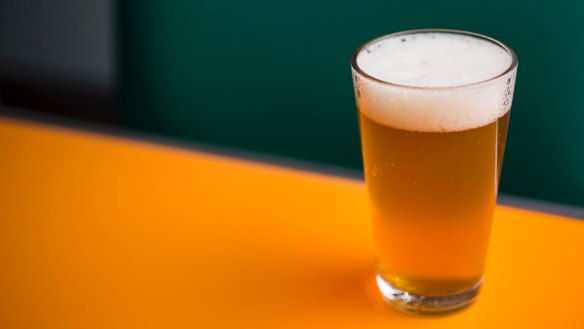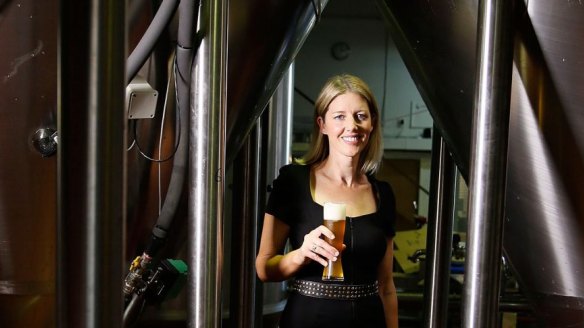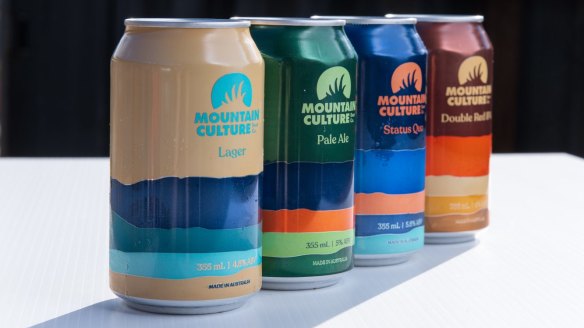The latest Australian craft beer trends from $15 tinnies to reliable fridge-fillers
Updated , first published

There has possibly never been a better time to be a beer lover in Australia. Whatever you desire in liquid form, there's a good chance someone is brewing it, and there's an equally good chance someone is brewing beers you'd never imagine in your wildest dreams.
There are funky Australian wild ales created with foraged native yeasts, pastry stouts conjuring nostalgia for sweet treats of childhood, smoothie sours laden with fruit puree, and beers earnestly recreating European classics.
We now have more than 600 craft brewers found everywhere from industrial warehouses to farms. Mates, families or individuals with a passion for creating flavoursome beers have decided to give it a crack and, in most cases, found success.
The dominant trend is for fruity, hop-forward beers: pale in colour and, increasingly, hazy in appearance. They're becoming ever easier to find in pubs, bars and bottleshops and will remain ubiquitous throughout spring and summer. Most breweries now include a hazy pale or IPA in their core range, with the former rivalling XPAs as the "standard" crafty offering. For a great example of each, look out for Fixation's Little Ray or Mountain Culture's Be Kind Rewind NEIPA.
It's an area in which brewers and growers of hops – which add flavour, aroma and bitterness to beer – are experimenting apace. Across the world, hop breeders are developing varieties with new flavours and aromas – often with lower bitterness and fruit-forward styles in mind – and creating new products that intensify certain characteristics, while brewers are trialling new techniques.
"There's real excitement as to what's going to come through in terms of flavours and hop characteristics," says Kirrily Waldhorn, whose roles in the beer world encompass educator, event host, consultant and brand champion for NZ Hops.
If you're on a tight budget and can spend money on a non-alc or an alcoholic beer, I know which one people will go for.Richard Adamson
As we head into peak beer-drinking season, expect to see craft lagers continuing their steady rise, too, as people rediscover the joys of a well-made pilsner or German-style lager – "a slow build rather than a boom" is Waldhorn's prediction.
And it will be interesting to see how the approachable fruited sours that have risen to prominence in recent years fare with so many hard seltzers on the market.
Perhaps the most fascinating story when it comes to craft beers, however, is one that is intrinsically linked with the challenges facing the beer and hospo industries in 2022. In the early part of the pandemic, brewers started releasing new beers in large-format cans. They were often higher in alcohol, dafter in concept, and typically retailed at $15 or more for a single 440ml or 500ml can. Yet they sold, seemingly no matter what they were, filling a gap for those who loved the experience of trying new beers at bars and festivals but who were now stuck at home.

It felt like a sea change in consumer behaviour – and certainly made perusing fridges equal parts confusing and kid-in-a-candy-shop. But now, with belts tightening, live music, dining out and overseas travel back on the cards, and many people returning to healthier lifestyles after the indulgences of lockdown, the appeal has waned and brewers have been forced to reconsider their business models.
So, we're seeing the rise of "fridge-fillers" – beers brewers hope still have enough interest for craft beer drinkers but which are sold at a cost of living crisis-suitable price point, typically sub-$60 for a case of 24 beers. Examples include Wayward's Everyday Ale and Everyday Lager (NSW) or Rover from Hawkers (Vic).
"Brewers are thinking about what the market wants, and at the moment people can't afford the $15 cans, so I think we'll see consolidation back to really good core-range beers," Waldhorn says.

As within the broader drinks industry, the rise of low and non-alcoholic beer continues to surprise, its growth driven by vastly increased quality and greater diversity of styles, including XPAs, fruit sours and IPAs with a bitter bite. Sure, the sector's rapid rise was from a tiny base, but it's not reached its ceiling, even if Waldhorn believes the hype isn't fully reflected in sales.
Richard Adamson, founder of Newtown-based Young Henrys and chair of the Independent Brewers Association, suggests they could be affected by economic headwinds: "If you're on a tight budget and can spend money on a non-alc or an alcoholic beer, I know which one people will go for."
The association would like to see indie brewers claim 15 per cent of the beer market by 2031. But while neither of the country's Japanese-owned behemoths, Lion and CUB, has made a major local acquisition since last September, the supermarket chains (Endeavour Group and Coles Liquor) are releasing more private label or homebrand craft beers, posing a threat to the association's goals.
"We'll see more consolidation and may even see some breweries fail," Adamson says. "At the same time, there are more breweries opening and we're seeing that growth in regional areas.
"There still seems to be an appetite for getting into the game. The dream of being involved in an industry that's fun and exciting and inclusive – those aspects are still very attractive."
Among consumers, Waldhorn believes craft beer is in a good position to weather the current economic climate, too. "People like small indulgences," she says. "They might not buy a new car, but red lipstick goes well at times like this. People upgrade their choice of ice-cream, and their choice of beer."
James Smith is the founder of The Crafty Pint, an online magazine that has been covering the Australian craft beer scene since 2010.